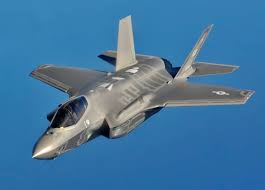
TECHING F-35 Fighter Engine | EngineDIY
The F-35 Lightning II, a fifth-generation fighter jet, is renowned for its cutting-edge technology and unparalleled capabilities. At the heart of this marvel of modern engineering lies its formidable power source – the F-35 fighter engine. In this blog, we delve into the intricacies of this vital component, exploring its design, applications, and the challenges involved in its production.
The F-35 fighter engine, officially known as the Pratt & Whitney F135, stands as a pinnacle of aviation engineering. Developed by Pratt & Whitney, a division of Raytheon Technologies, this advanced turbofan engine is specifically tailored to meet the demanding requirements of the F-35 Lightning II program. Its design is optimized for high-performance, reliability, and adaptability, ensuring optimal operation across a diverse range of mission profiles.
The F-35 fighter engine serves as the primary propulsion system for the F-35 Lightning II, a multirole fighter aircraft employed by various branches of the United States military and allied nations. This versatile engine enables the F-35 to excel in a wide array of missions, including air superiority, ground attack, reconnaissance, and electronic warfare. Its advanced features, such as stealth capabilities, supersonic speed, and superior fuel efficiency, empower the F-35 to maintain air dominance and operational flexibility in dynamic combat environments.
Moreover, the F-35 fighter engine facilitates the aircraft's vertical takeoff and landing (VTOL) capability in the F-35B variant, enhancing its operational versatility for deployment in diverse theaters of operation. Whether deployed from conventional airfields, aircraft carriers, or austere forward operating bases, the F-35 with its powerful engine stands ready to fulfill its mission objectives with unmatched precision and lethality.

The production of the F-35 fighter engine presents a myriad of technical and logistical challenges, reflecting the complexity inherent in developing advanced aerospace propulsion systems. One of the foremost challenges lies in ensuring the engine's performance and reliability under extreme operating conditions, including high-speed flight, rapid acceleration, and sustained maneuvering.
Furthermore, the integration of advanced materials, such as lightweight alloys and composite components, demands precision engineering and stringent quality control measures to uphold structural integrity and durability. The incorporation of cutting-edge technologies, such as digital engine controls and adaptive cycle designs, further complicates the manufacturing process, requiring specialized expertise and sophisticated production facilities.
Moreover, the sheer scale of the F-35 program, encompassing multiple variants and international partnerships, necessitates close collaboration among diverse stakeholders, including government agencies, defense contractors, and aerospace suppliers. Coordinating the production, assembly, and testing of F-35 fighter engines across global supply chains presents formidable logistical hurdles, requiring robust supply chain management systems and risk mitigation strategies.
In addition, the stringent regulatory requirements governing aerospace manufacturing impose rigorous certification procedures and compliance standards, adding complexity and time to the production timeline. From stringent performance testing to exhaustive quality assurance protocols, every aspect of the F-35 fighter engine's production cycle is meticulously scrutinized to ensure compliance with stringent safety and performance standards.
Despite these challenges, the relentless dedication of engineers, technicians, and industry partners continues to drive innovation and excellence in the production of F-35 fighter engines. Through continuous refinement and optimization, Pratt & Whitney remains committed to delivering reliable, high-performance propulsion systems that empower the F-35 Lightning II to maintain air superiority and defend the skies for generations to come.
The F-35 fighter engine stands as a testament to human ingenuity and technological prowess, embodying the relentless pursuit of excellence in aerospace engineering. As the beating heart of the F-35 Lightning II, this advanced propulsion system enables unmatched performance, versatility, and lethality in the modern battlefield. Despite the formidable challenges inherent in its production, the F-35 fighter engine remains a symbol of innovation and resilience, driving the evolution of air power and shaping the future of aerial warfare.
From:
youtube

Leave a comment